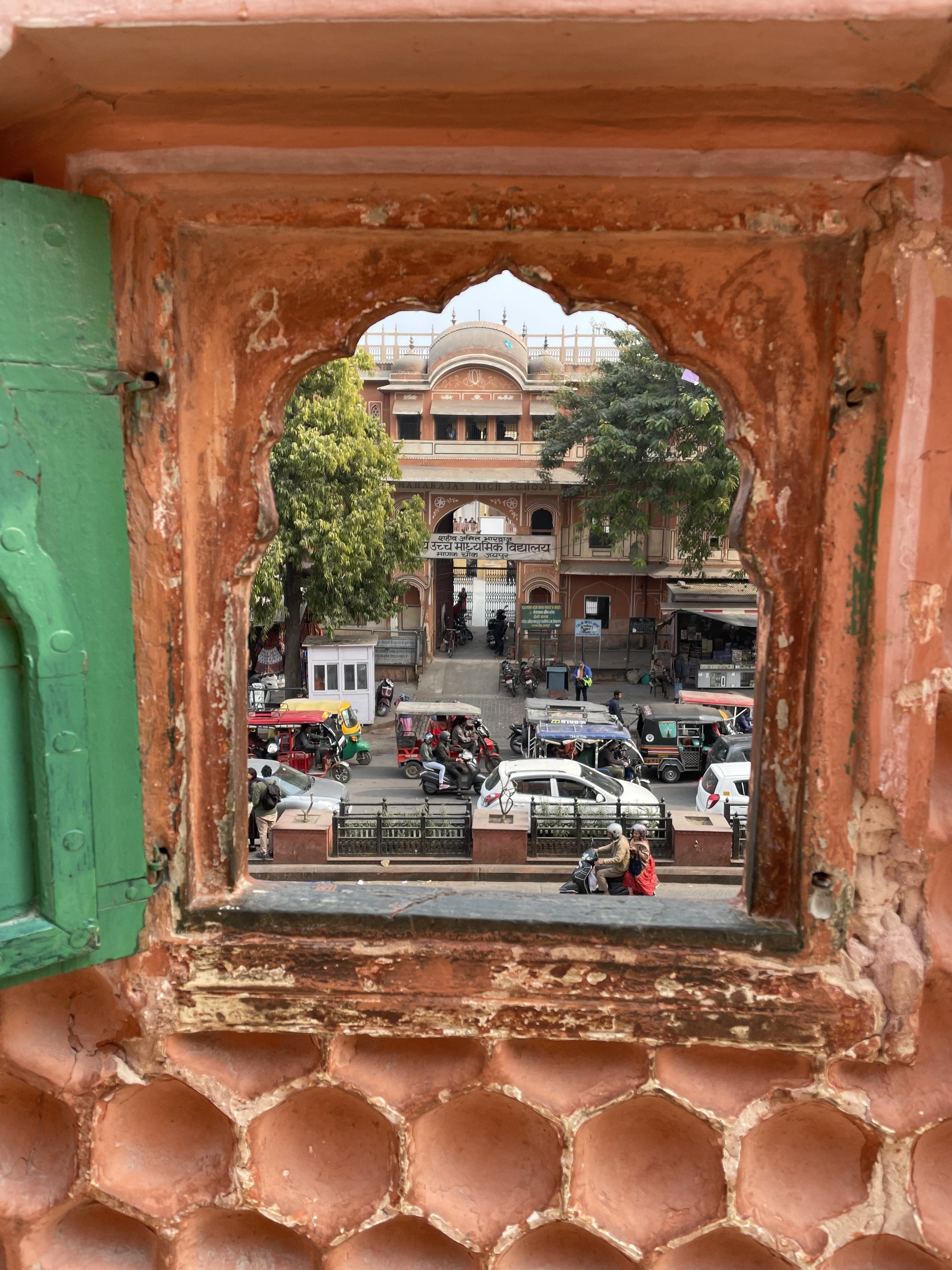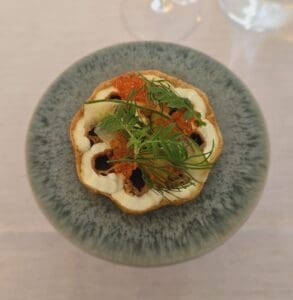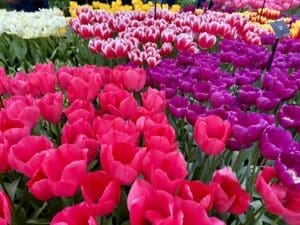During our days in Jaipur, we tried to see as many palaces and temples as possible, but it is certainly not easy in this city that is literally full of interesting places. In previous posts, you can read about when we flew a hot air balloon over the city and if you want to read a bit more general information about Jaipur and what we thought about the city, you can look at here. If you are curious about Mumbai, read more here.
One tip when visiting attractions in India is to always book your own guide. Most attractions have guides who are government employees and these are knowledgeable and very affordable. If you are not familiar with Indian history, it is good to have someone with you to explain things. Information signs are often absent. However, beware of the bogus guides who usually stand just outside the sights, these are expensive and bad. Government guides have official ID cards around their necks and are therefore easy to recognise.
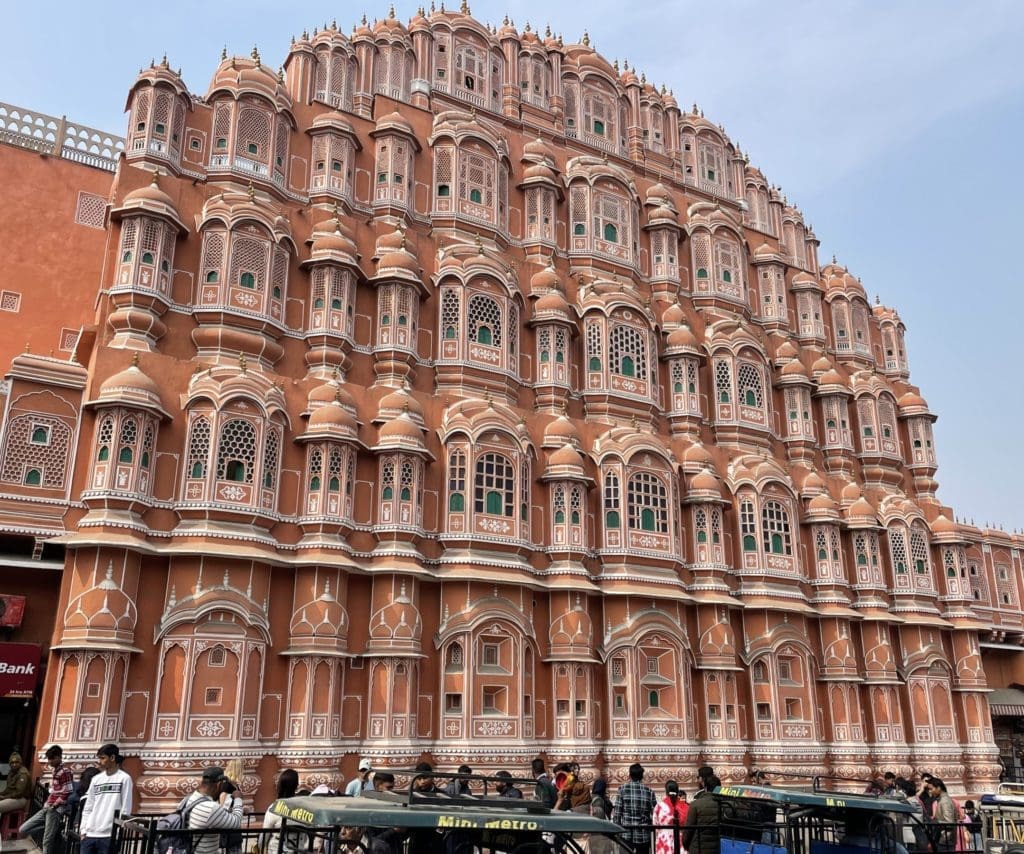
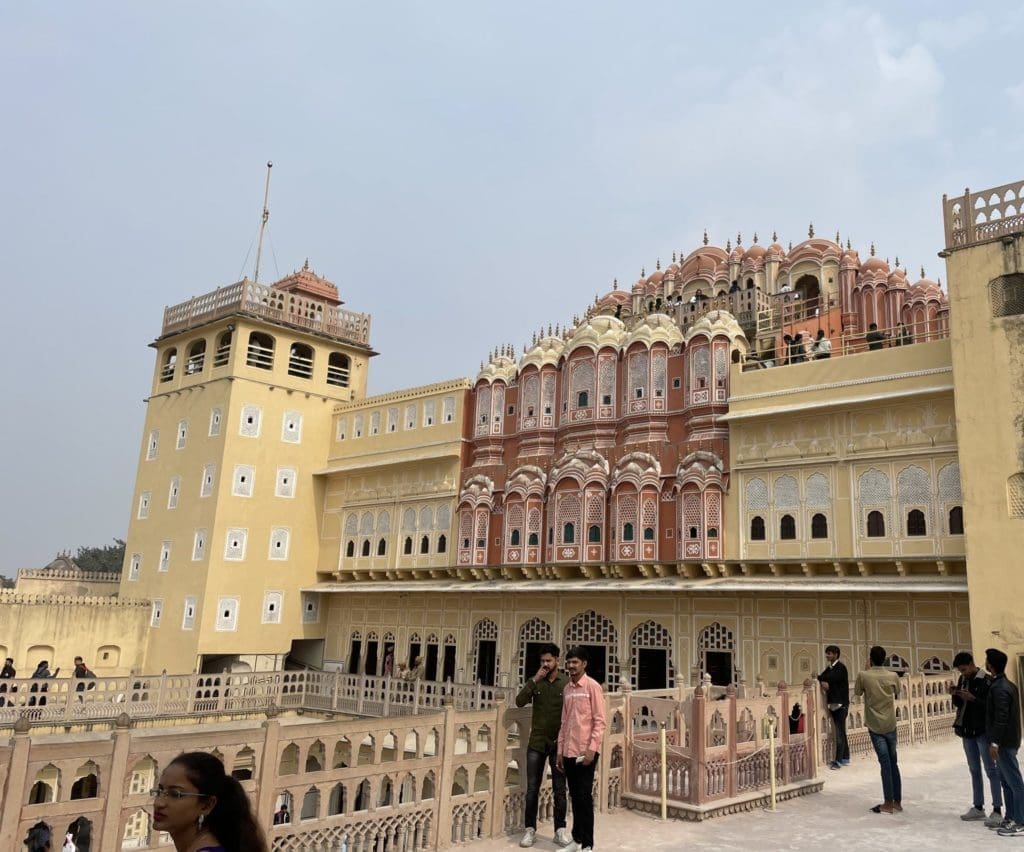
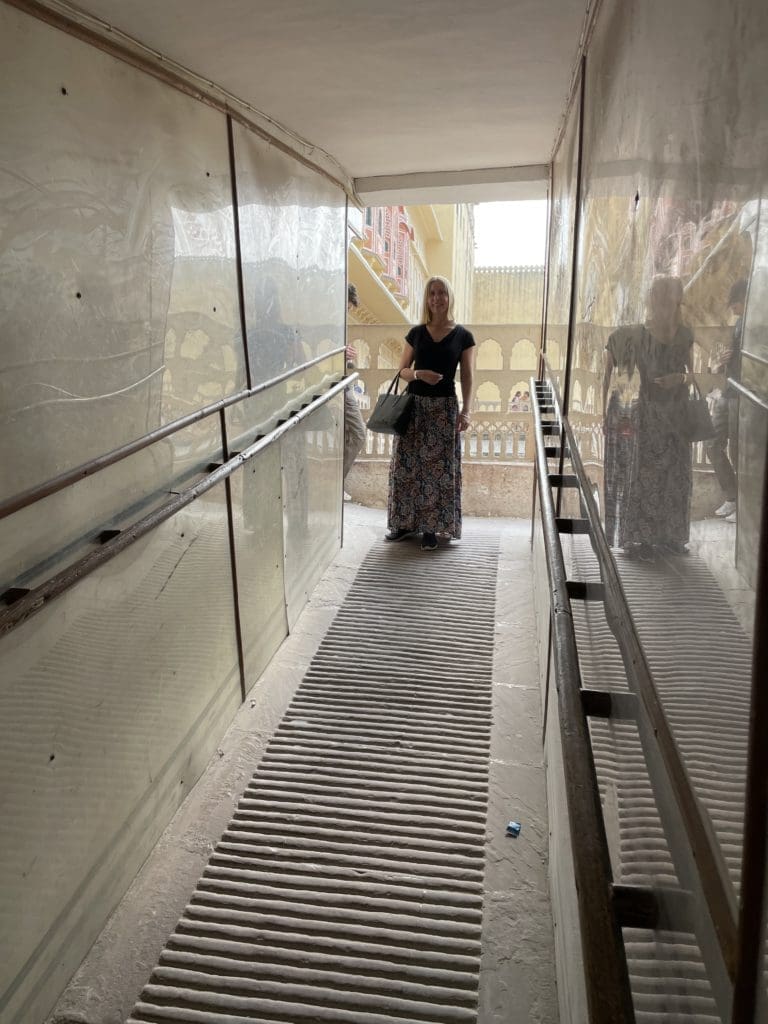
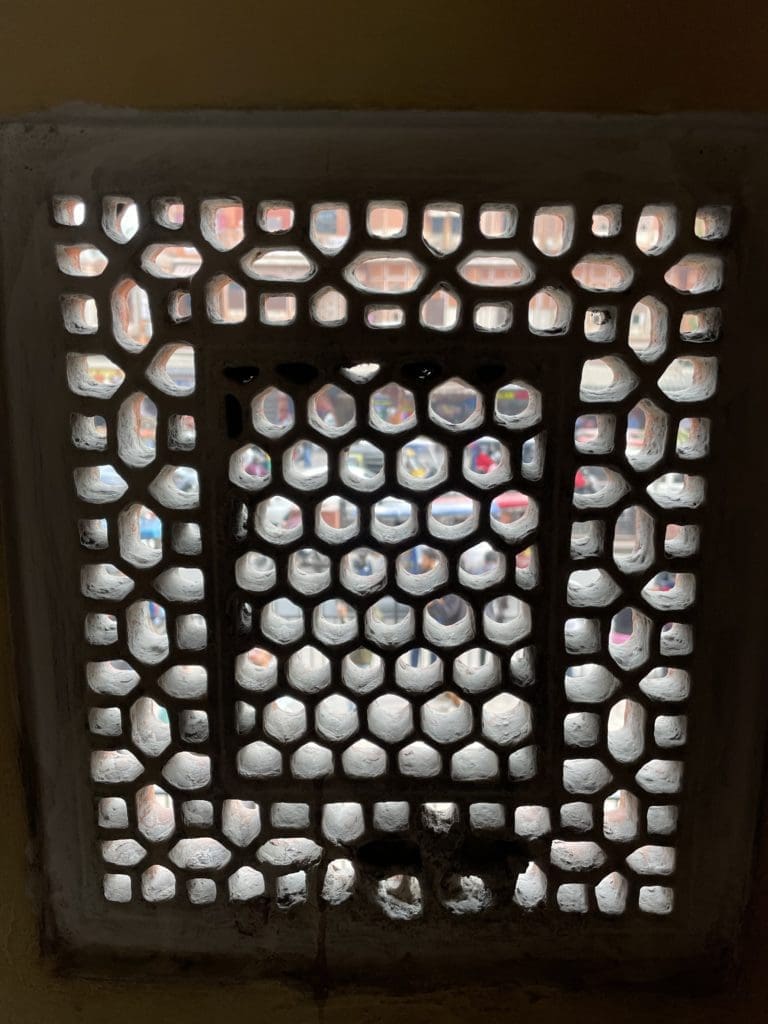
The Palace of the Winds, or Hawa Mahal as it is actually called, can be found in the centre of the old city. The five-storey building with its distinctive appearance is not to be missed and is a well-known part of Jaipur's cityscape. The palace was built in 1799 as a summer palace for the Maharajah and his family. It got its name from the ingenious system of windows and panes that allowed a cool breeze to pass through the palace during the hot summer months. One part of the palace was only for the women, the queens. It was said that their beauty was so stunning that wars were started for them. So, to keep the peace, it was best to keep them out of sight of the common people, but at least the queens could spend their days looking out at the life of the city through the small windows. The queens were always dressed in colourful costumes adorned with gold and precious stones. This made their clothes so heavy that they had difficulty walking the five floors of the palace. The solution was not to lighten the heavy clothes, but eunuchs were brought in to roll the queens in wheelchairs floor by floor. Hence, we can perhaps say that the palace was accessible even then. Since no men other than the king were allowed to socialise with the queens, the eunuchs also acted as bodyguards in this part of the palace.
The Hawa Mahal is also connected to the Jantar Mantar observatory and the City Palace. The idea was that the royal family would be able to walk between them without having to go outside. Even today, the royal family is housed in a part of the City Palace and when the king is at home, the Indian flag is flown alongside an extra flag that is slightly smaller, about a quarter of the size. It is said that Maharaja Sawai Man Singh II, the founder of Jaipur, was a quarter smarter than his subjects and that his presence in the city would therefore be manifested by this flag.
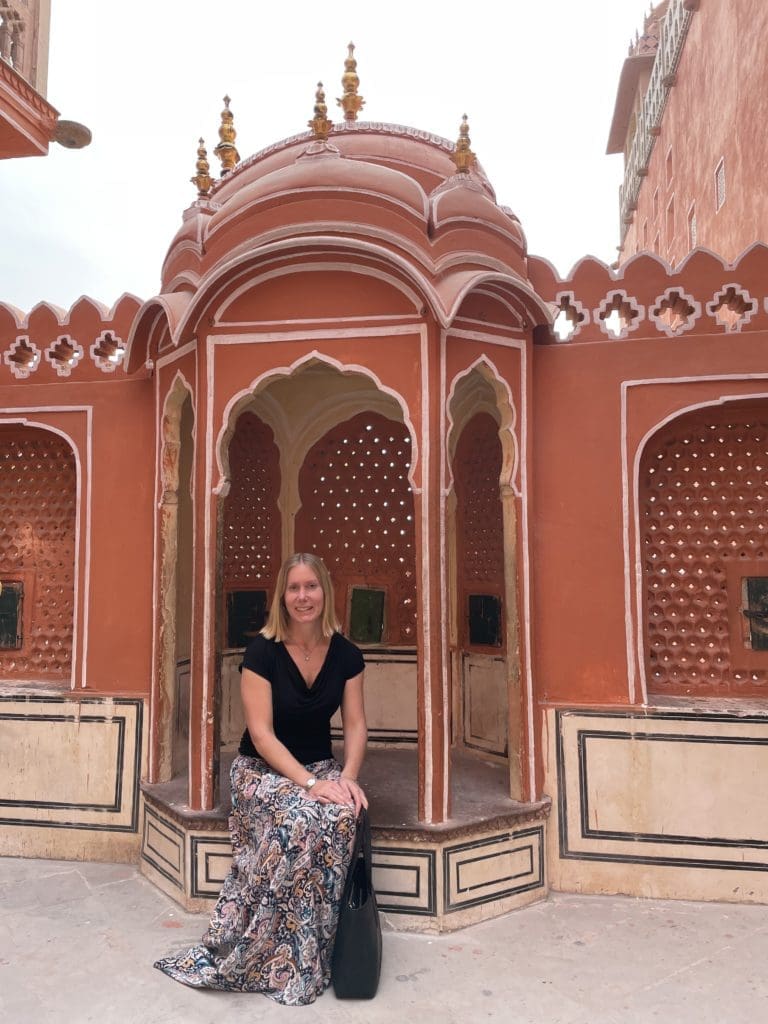
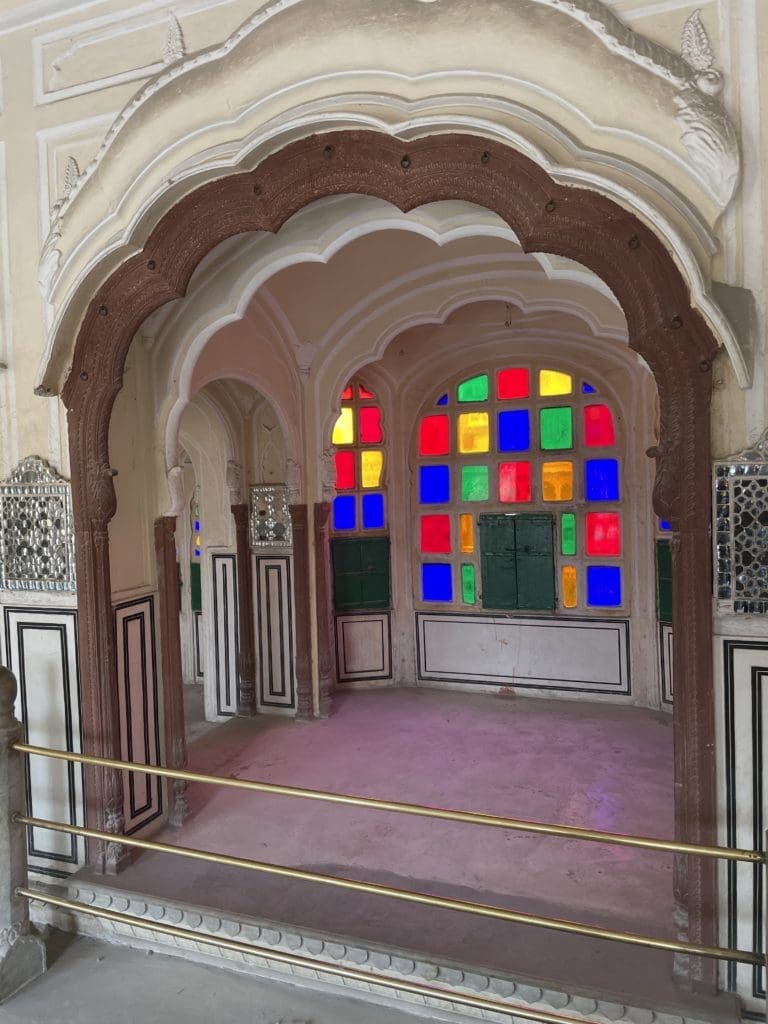
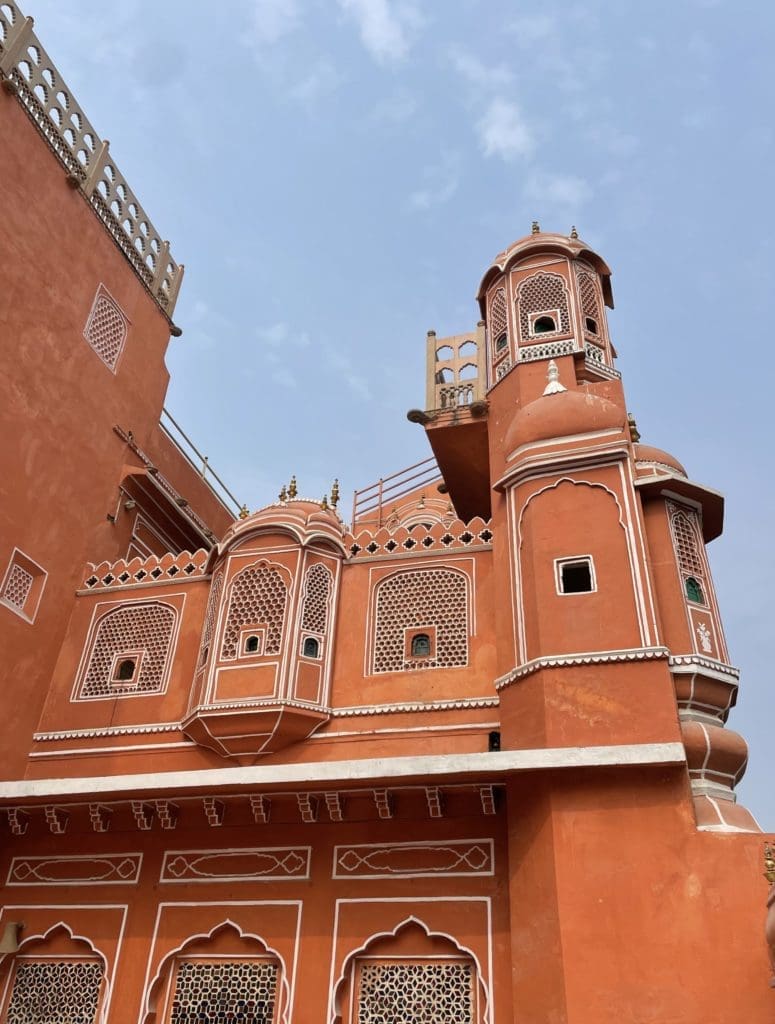
Just over a mile outside Jaipur, the former capital of Rajasthan, Amber, is home to the Amber Palace. Amber is actually pronounced Amer and is sometimes spelled with, and sometimes without a B. Furthermore, the terms Amber Palace and Amber Fort seem to be used synonymously. Before we left, we read that you had to either take a jeep or an elephant ride up the hill to the palace. Sceptical as I am about animals at tourist attractions, we chose to take an Uber to the car park at the palace. From here it was indeed a hill up, but no danger whatsoever to walk on your own feet. If you then want to go down to Amber to shop for carpets, textiles, jewellery and other handicrafts, you can take a jeep down.
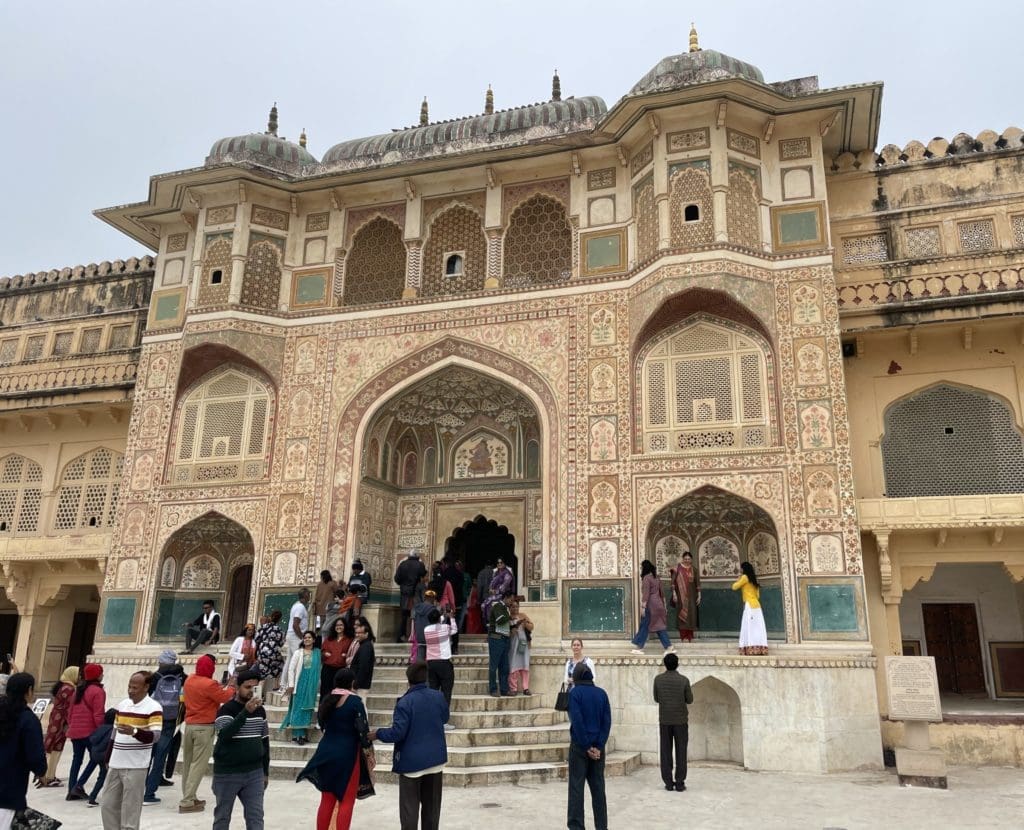

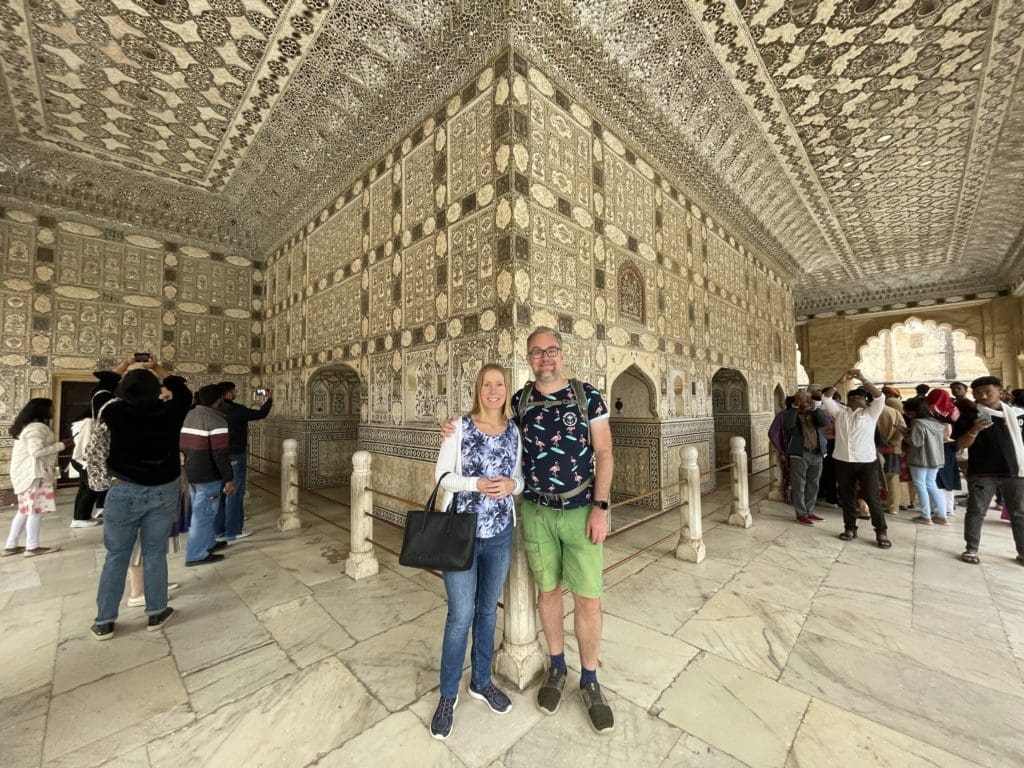

Amber Palace began construction in 1592 with various additions and extensions made over the next 150 years until Jaipur became the new capital of Rajasthan. The exterior is more fortress-like and built of red sandstone while the palace interior is built of white marble. As with the Palace of the Winds, ingenious designs have been used here to keep cool on hot days, or to retain heat on the few chilly days of the year.
Again, we hired a guide who showed us around the palace and told us about its amazing history. He also showed us the way down to Amber and it is not unlikely that he got a little commission for every tourist he managed to lure down. If so, he had a good day.

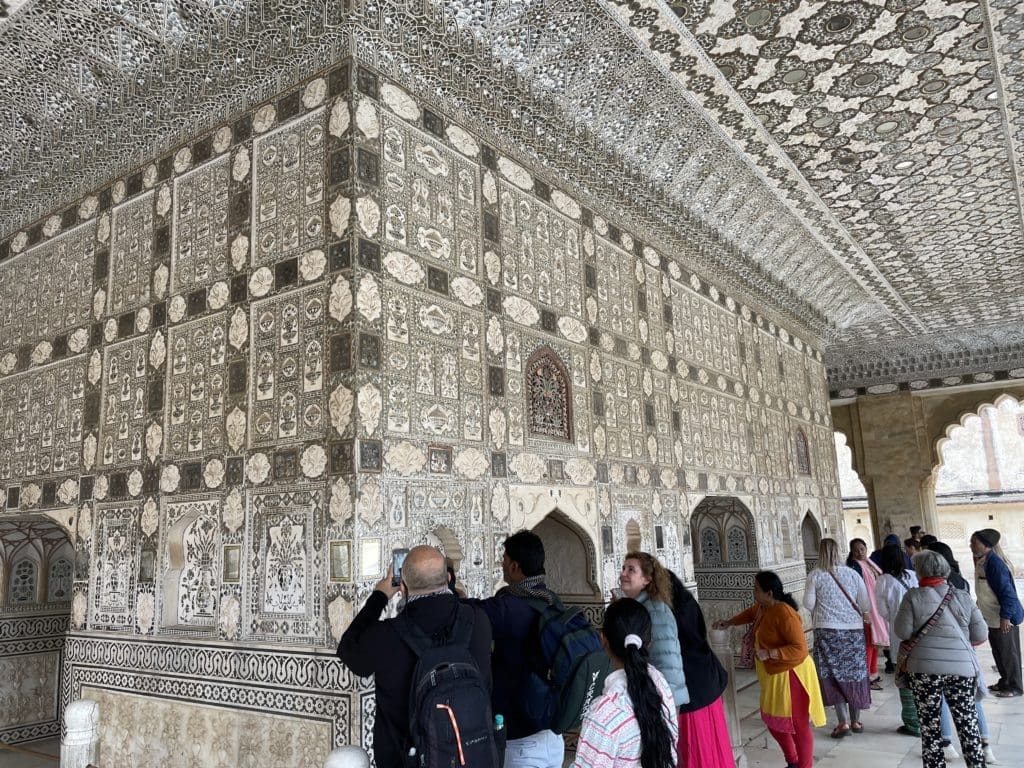


The whole trip to Amber Palace took about half a day, but then I also count the shopping, the palace can probably be done in a couple of hours. However, we chose to stay until the evening to see their facade show. As soon as it starts to get dark, they have a cool show that lights up the entire palace wall and where the history of the palace is told. The show is first in English and an hour later in Hindi.

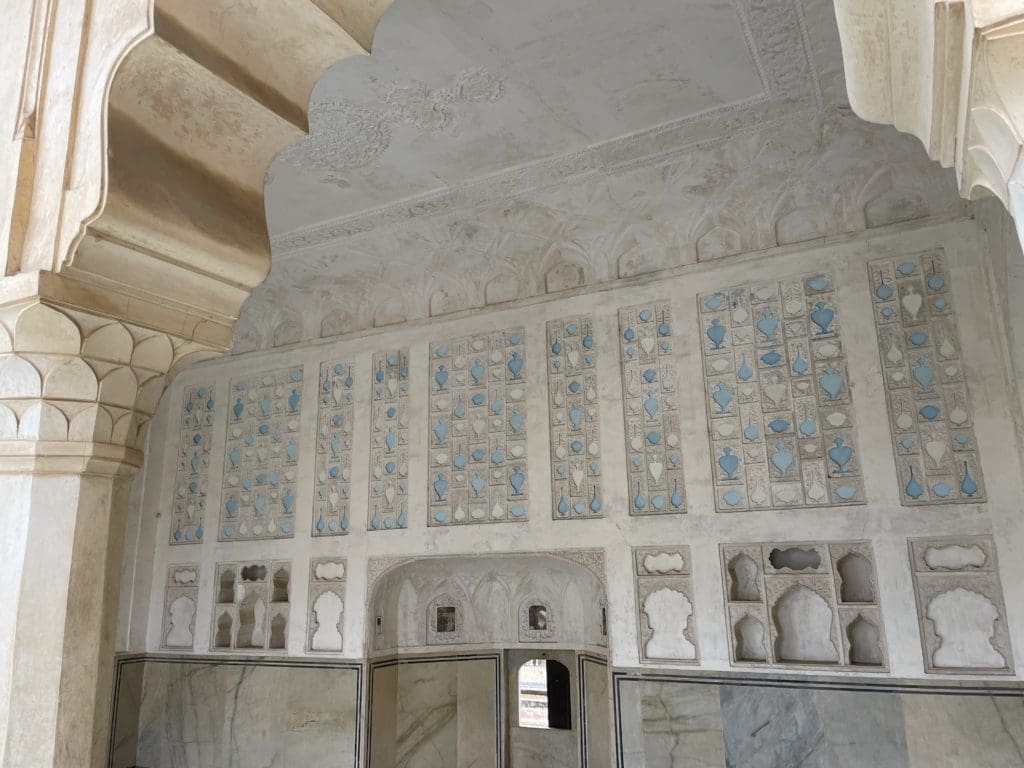
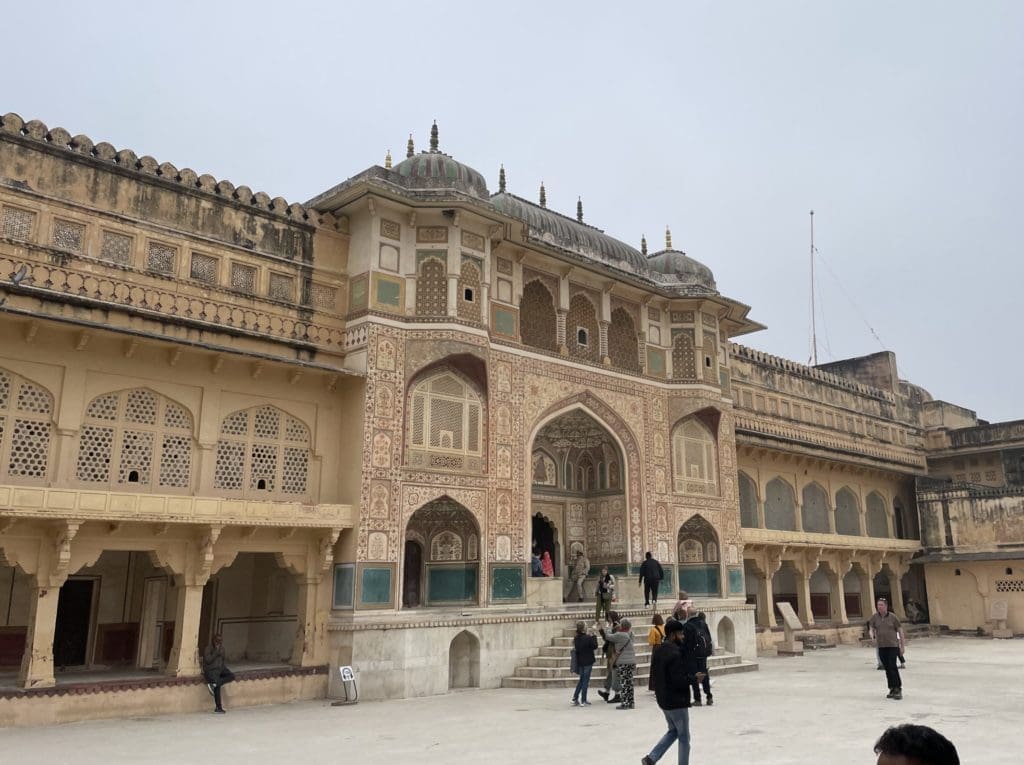

During our days in Jaipur we didn't really get to all the places we had planned to visit, but as a wise man once said, "you can do what you can do". In any case, we got a positive picture of the city, although in my opinion it was perhaps a little too big and chaotic. One reason why the plans were delayed somewhat was the traffic chaos and that it therefore took a long time to get even a short distance. What we would have liked to see but did not have time for is among other things Nahargarh Fort located just outside the city, Birla Temple, a temple entirely in white marble and Gaitore, Memorials of the kings. However, that will have to be another trip, now we are off to Udaipur, the Venice of Asia. In Udaipur we stayed at a really exciting hotel that you can read more about. here. If you want to see more of the palaces and temples or maybe see a tiger, I suggest you click here. here.
